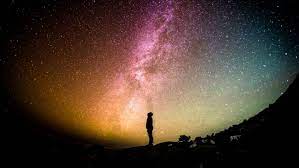Introduction
In the realm of celestial wonders, astral photography stands as a testament to humanity’s fascination with the cosmos. Technological advancements have profoundly influenced this niche field, transforming the way we capture and explore the mysteries of the night sky. This article delves into the influence of technology on astral photography, highlighting the innovations that have revolutionized our ability to document and appreciate the beauty of the universe.
Advanced Camera Sensors for Stellar Detail
The heart of astral photography lies in capturing the intricate details of celestial objects. Technological advancements in camera sensors play a pivotal role in enhancing the resolution and sensitivity of astral images. High-resolution sensors enable photographers to capture stunning details of distant galaxies, nebulae, and stars, providing a visual feast for enthusiasts and researchers alike.
Long-Exposure Techniques for Deep-Sky Exploration
Long-exposure techniques, facilitated by advanced camera technology, have opened new frontiers in deep-sky exploration. Astral photographers can now capture faint objects over extended periods, revealing the beauty of deep-sky wonders such as distant galaxies, star clusters, and nebulous formations. These techniques unveil celestial landscapes that were once beyond the reach of traditional photography.
Image Stacking for Noise Reduction
In the quest for clearer and more detailed astral images, technology introduces the concept of image stacking. This technique involves combining multiple frames of the same celestial scene, effectively reducing noise and enhancing signal-to-noise ratios. Image stacking enables astral photographers to produce sharper and more vibrant images by mitigating the impact of atmospheric interference and camera sensor noise.
Remote Telescope Control for Precise Framing
The integration of remote telescope control technology has revolutionized the way astral photography is conducted. Through digital interfaces, photographers can control telescopes situated in remote, optimal locations for stargazing. This allows for precise framing and alignment, ensuring that the desired celestial objects are captured with accuracy and clarity.
Astrophotography Software for Image Processing
Astral photography extends beyond capturing images to the intricate process of image processing. Specialized astrophotography software leverages advanced algorithms to enhance and refine astral images. From adjusting color balance to sharpening details, these tools empower photographers to bring out the best in their celestial captures.
Real-Time Sky Mapping Applications
With the aid of real-time sky mapping applications, astral photographers can plan their sessions with precision. These applications provide live information about celestial events, positions of planets, and upcoming astronomical phenomena. Armed with this data, photographers can optimize their shooting locations and timing, maximizing the potential for capturing rare and captivating celestial moments.
Adaptive Optics for Clearer Views
Adaptive optics technology, originally developed for astronomical observatories, has found its way into astral photography. This technology compensates for atmospheric distortions in real-time, resulting in clearer and sharper images. By dynamically adjusting optical elements, adaptive optics mitigate the blurring effects caused by Earth’s atmosphere, allowing for unprecedented clarity in astral photography.
Light Pollution Filters for Urban Stargazers
For photographers situated in urban areas plagued by light pollution, specialized filters have become indispensable. These filters, designed to block specific wavelengths associated with artificial lighting, help mitigate the adverse effects of light pollution. Urban stargazers can now capture clearer astral images even in environments with high levels of artificial illumination.
Portable and Compact Telescope Designs
Technological advancements have led to the development of portable and compact telescope designs, catering to the needs of on-the-go astral photographers. These telescopes combine advanced optics with lightweight materials, offering portability without compromising on image quality. This allows photographers to explore diverse locations and capture celestial wonders without being tethered to a fixed observatory.
Social Media and Online Communities for Collaboration
The influence of technology extends beyond the tools of astral photography to the way enthusiasts connect and collaborate. Social media platforms and online communities provide avenues for sharing experiences, exchanging tips, and showcasing celestial captures. This interconnected network of astral photographers fosters a sense of community and encourages the exploration of new techniques and ideas.
Conclusion
The influence of technology on astral photography has elevated this celestial art form to unprecedented heights. From advanced camera sensors and long-exposure techniques to real-time sky mapping applications and adaptive optics, technology has empowered photographers to unravel the mysteries of the cosmos with breathtaking clarity. As we continue to push the boundaries of astral exploration, the symbiotic relationship between technology and the wonders of the night sky promises a future filled with awe-inspiring celestial imagery.

